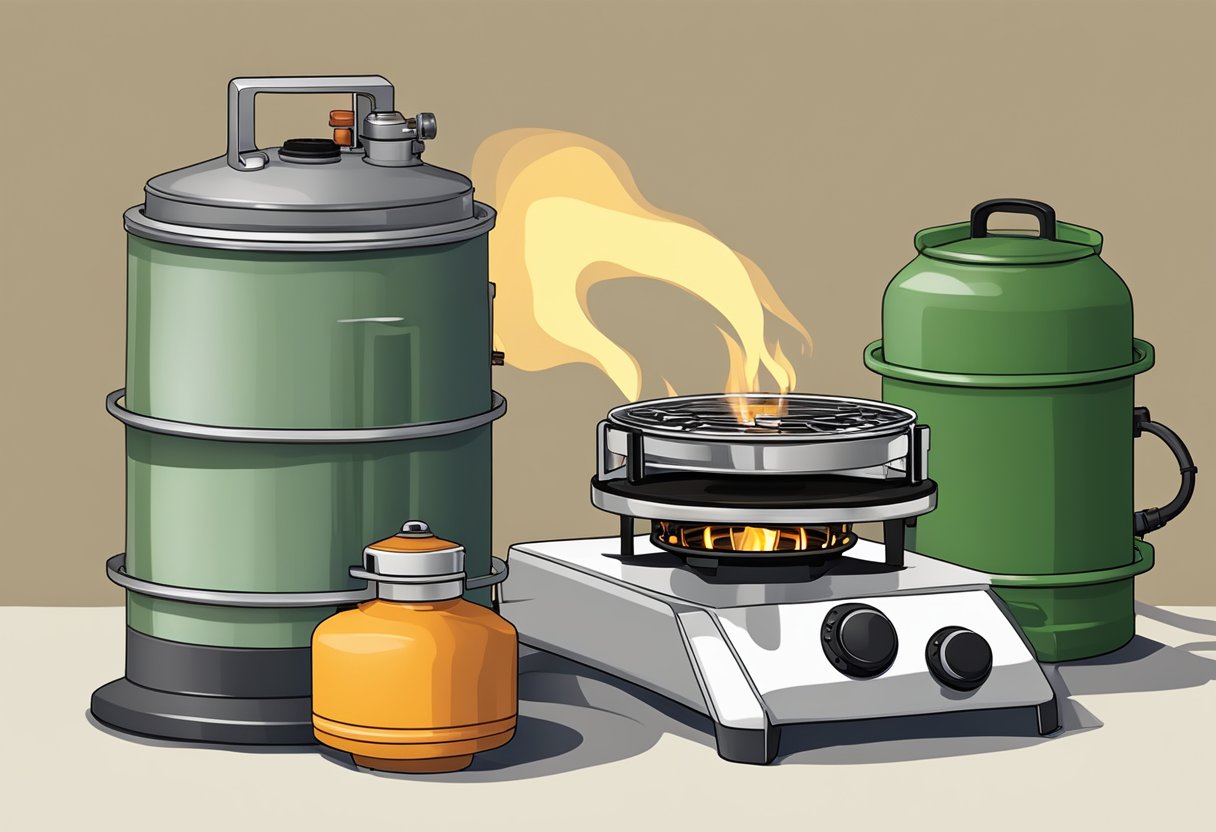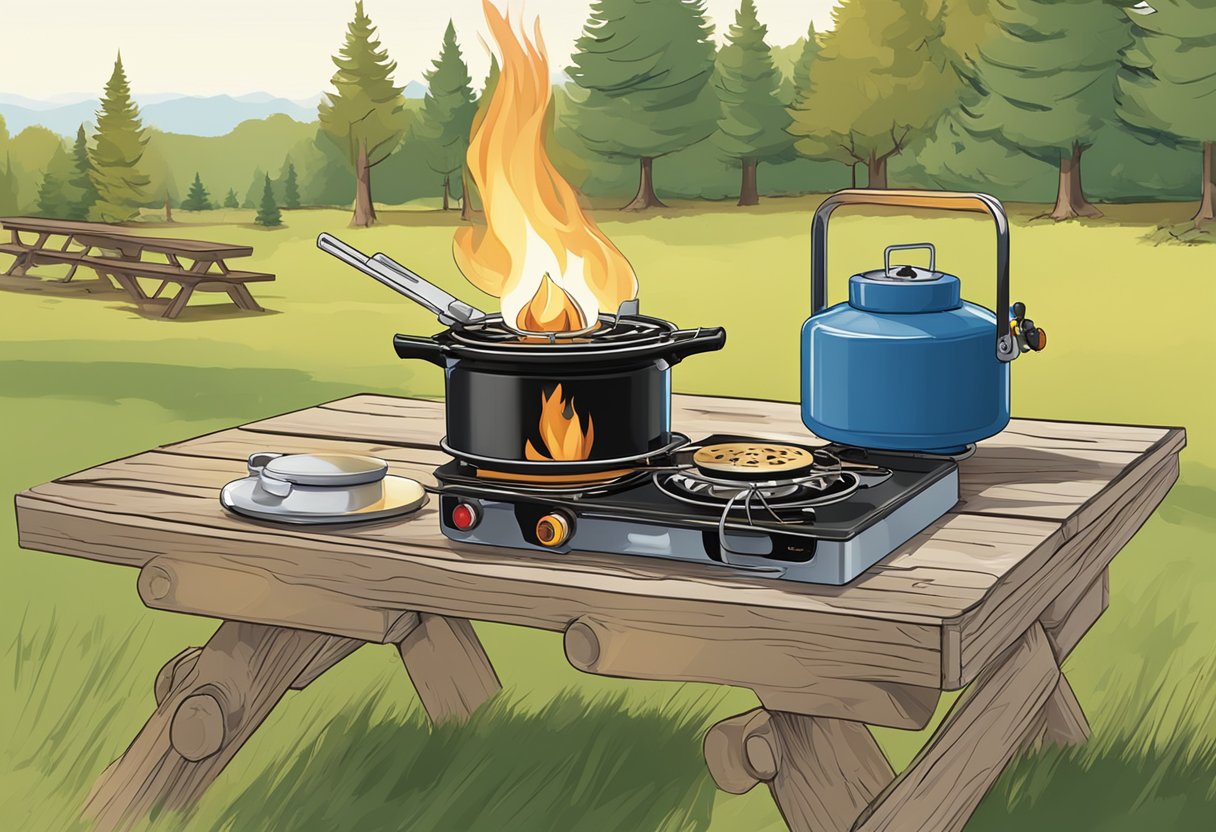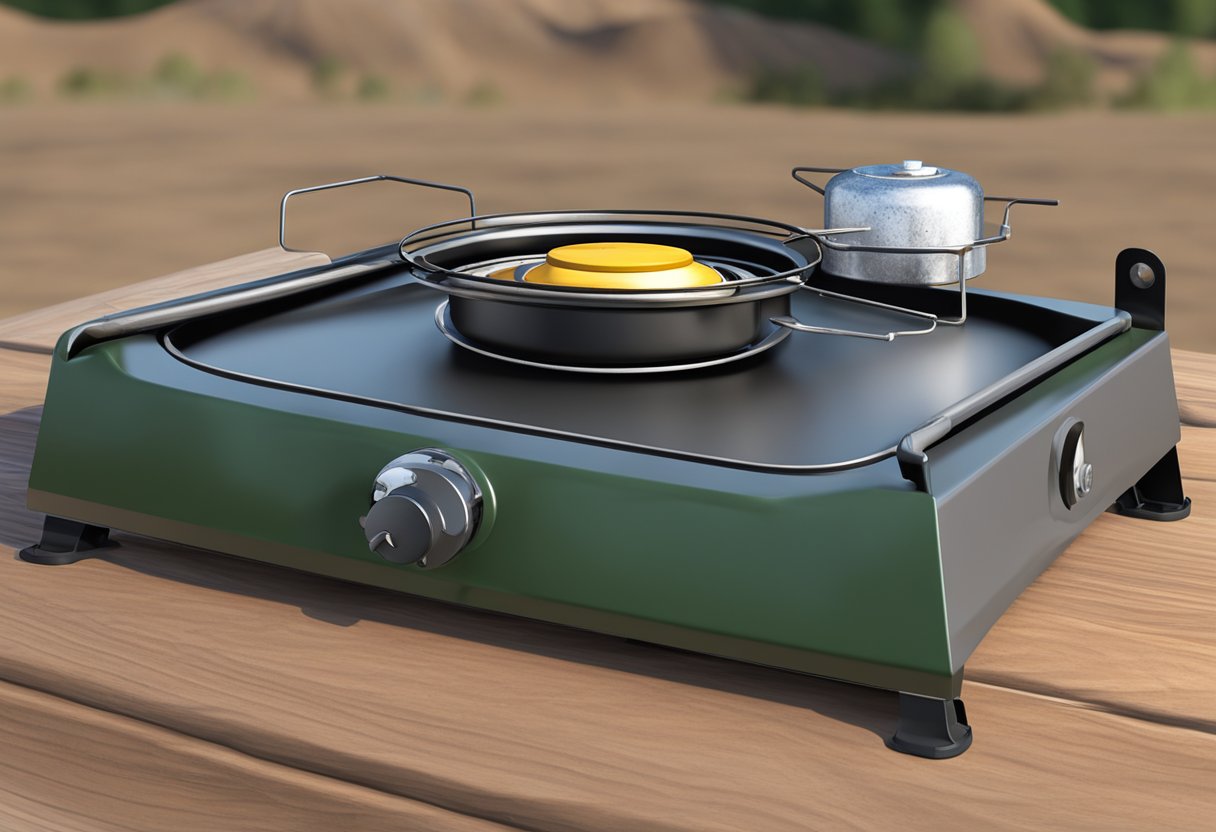If you’re planning a camping trip, you may be wondering if you need a gas regulator for your camping stove. The answer is yes, in most cases. A gas regulator is an essential component that ensures your stove functions properly and safely.

Without a regulator, your camping stove could receive too much or too little gas, causing it to malfunction. This could result in a dangerous situation, such as a gas leak or a fire. Therefore, it’s important to have a regulator that is designed to work with your specific stove and the type of fuel it uses. In the following sections, we will explore the different types of camping stoves and fuels, and how to choose the right regulator for your needs.
Understanding Gas Regulators

Gas regulators are an essential component of any camping stove that runs on propane or butane gas. They control the flow of gas from the canister to the stove, ensuring that the stove receives a consistent supply of gas at the correct pressure. In this section, we will explore the purpose of a gas regulator and how it works.
Purpose of a Gas Regulator
The purpose of a gas regulator is to reduce the pressure of the gas coming from the canister to a level that is safe and appropriate for the stove. Camping stove burners require a specific gas pressure to function correctly, and the regulator ensures that the pressure remains consistent throughout the cooking process. Without a regulator, the stove could receive too much or too little gas, causing it to malfunction.
Gas regulators also serve as a safety device. They have a built-in valve that automatically shuts off the gas flow if the pressure becomes too high. This prevents the stove from overheating or catching fire, which could be dangerous in a camping environment.
How Gas Regulators Work
Gas regulators work by using a diaphragm to control the flow of gas. The diaphragm is a flexible membrane that moves in response to changes in gas pressure. When the gas pressure coming from the canister is too high, the diaphragm moves to restrict the flow of gas. When the pressure is too low, the diaphragm moves to allow more gas to flow through.
The gas pressure is measured by a spring-loaded mechanism inside the regulator. The spring applies force to the diaphragm, which in turn controls the gas flow. The regulator also has an adjustment screw that allows you to fine-tune the gas pressure to suit your stove’s requirements.
In summary, gas regulators are an essential component of any camping stove that runs on propane or butane gas. They control the flow of gas from the canister to the stove, ensuring that the stove receives a consistent supply of gas at the correct pressure. Gas regulators also serve as a safety device, automatically shutting off the gas flow if the pressure becomes too high.
Types of Camping Stoves
When it comes to camping stoves, there are several types to choose from. Each type has its own advantages and disadvantages, so it’s important to choose the right one for your needs. Here are the three main types of camping stoves:
Propane Camping Stoves
Propane camping stoves are the most popular type of camping stove. They are easy to use, reliable, and provide plenty of heat. Propane is a clean-burning fuel that is readily available at most camping stores. Most propane camping stoves come with a regulator, which helps to control the flow of gas to the burner. This ensures that the flame stays consistent and doesn’t flicker or go out.
Liquid Fuel Stoves
Liquid fuel stoves are another popular type of camping stove. They use liquid fuel, such as white gas or kerosene, which is stored in a refillable bottle. Liquid fuel stoves are more versatile than propane stoves because they can be used in extreme weather conditions and at high altitudes. They also provide a hotter flame, which makes them ideal for cooking large meals or boiling water quickly.
Backpacking Stoves
Backpacking stoves are designed for hikers and backpackers who need a lightweight and compact stove. They are usually powered by propane or butane cartridges, which are easy to replace. Backpacking stoves come in a variety of sizes and styles, but they all have one thing in common: they are designed to be portable. This means that they are lightweight and easy to pack, making them ideal for long hikes and backpacking trips.
Overall, when choosing a camping stove, it’s important to consider your needs and the conditions you will be camping in. If you’re car camping and need a stove that provides plenty of heat, a propane camping stove is a good choice. If you’re backpacking and need a lightweight and portable stove, a backpacking stove is the way to go. And if you need a stove that can handle extreme weather conditions, a liquid fuel stove is the best option.
Safety Considerations

When it comes to using a camping stove, safety should always be your top priority. While camping stoves can be a great way to cook meals and enjoy the outdoors, they can also pose some serious risks if not used properly. Here are some safety considerations to keep in mind when using a camping stove.
Preventing Leaks and Explosions
One of the biggest risks associated with camping stoves is the potential for gas leaks and explosions. To prevent leaks, always make sure that your stove is properly connected to the fuel source and that all connections are tight. You should also check the fuel canister for any signs of damage or wear, such as dents or rust. If you notice any damage, replace the canister before using it.
Another important safety feature to look for is a pressure regulator. A regulator helps to prevent sudden spikes in gas pressure, which can be dangerous. Look for a camping stove that comes with a regulator or purchase one separately if it is not included.
Importance of Quality Materials
The materials used to make your camping stove can also impact its safety. Look for stoves made from high-quality materials that are designed to withstand the rigors of outdoor use. Stainless steel and aluminum are both good options, as they are durable and resistant to corrosion.
It’s also important to choose a camping stove that is designed with safety features in mind. For example, some stoves come with a built-in windscreen that can help prevent accidents caused by gusts of wind. Others may have a locking mechanism that keeps the stove securely in place while in use.
By taking these safety considerations into account, you can help ensure that your camping stove is safe and reliable. Always follow the manufacturer’s instructions and use your stove in a well-ventilated area to minimize the risk of accidents.
Installation and Maintenance
Setting Up the Gas Regulator
Installing a gas regulator for your camping stove is a straightforward process that you can easily do by yourself. Begin by ensuring that your regulator is compatible with your stove and fuel type. Check the manufacturer’s instructions for specific details.
Next, turn off the gas supply and disconnect the hose from the stove. Attach the regulator to the propane tank and connect the hose to the regulator. Make sure that all connections are tight and secure. Then, turn on the gas supply and check for any gas leaks. You can do this by applying soapy water to the connections and looking for bubbles.
Regular Checks and Replacements
Regular maintenance of your gas regulator is important to ensure that it functions properly and safely. Check your regulator for any damage, such as cracks or dents, which can cause it to fail or leak gas. If you notice any damage, replace the regulator immediately.
Additionally, check the connections of your regulator and hose before each use. Make sure that they are tight and secure to prevent gas leaks. If you detect any leaks, turn off the gas supply and fix the issue before using the stove.
It is also recommended that you replace your gas regulator every five years or if you notice any signs of wear and tear. This ensures that your regulator is functioning optimally and reduces the risk of gas leaks.
In conclusion, installing and maintaining a gas regulator for your camping stove is easy to do by yourself. Regular checks and replacements are important to ensure that your regulator functions properly and safely. By following these steps, you can enjoy a safe and hassle-free camping experience.
Choosing the Right Gas Regulator

When it comes to choosing the right gas regulator for your camping stove, there are a few things you need to consider. A gas regulator is an essential component of your camping stove setup, as it helps to ensure a consistent flame and steady supply of gas to your stove. Here are some things to keep in mind when choosing a gas regulator.
Compatibility with Your Stove
One of the most important things to consider when choosing a gas regulator is compatibility with your camping stove. Not all gas regulators are created equal, and some may not be compatible with your stove. Make sure to check your stove’s manual or specifications to determine what type of regulator is required. Some stoves may require a propane regulator, while others may require a high-pressure regulator.
Considering the PSI and Hose Requirements
Another important factor to consider when choosing a gas regulator is the PSI and hose requirements. Make sure to choose a regulator that is compatible with the PSI rating of your stove and the hose that connects the stove to the regulator. A regulator that is not rated for the correct PSI may not provide enough gas to your stove, while a hose that is not compatible with the regulator may not fit properly and could lead to gas leaks.
Optimally, you want to choose a regulator that will provide a consistent flow of gas to your stove, allowing for optimal efficiency and a steady flame. A regulator that is too small may not provide enough gas, while a regulator that is too large may provide too much gas, leading to wasted fuel and inefficient cooking.
In summary, choosing the right gas regulator for your camping stove is essential for ensuring a consistent flame and steady supply of gas. Make sure to choose a regulator that is compatible with your stove and rated for the correct PSI and hose requirements. With the right gas regulator, you can enjoy efficient and hassle-free cooking on your next camping trip.